Ever stared under the hood of your car and felt like you were unlocking a puzzle with no solution? You’re not alone—cars can look complicated, but once you peel back the mystery, the basics are surprisingly straightforward. Getting to know the main parts of your car isn’t just about impressing your friends. It’s about saving money, staying safe, and avoiding sudden panic when something weird pops up on your dashboard. The truth is, most people don’t know what half those metal parts do, so you’re already ahead just by reading. Forget needing a toolbox or a tool belt. You only need a curious mind and a desire to be less clueless at the next mechanic visit.
The Heart of Every Ride: The Engine and Its Crew
The engine is literally what keeps your wheels spinning. Think of it as the heart of your car. Instead of pumping blood, it burns fuel to make power. There are all sorts of engines out there—four-cylinder, V6, V8—and each has its own way of moving your ride. Most modern cars use what’s called an internal combustion engine, where a mix of air and fuel gets set on fire in a special chamber, making tiny explosions that drive the pistons up and down. The wild part? This is happening hundreds of times a minute, even when you’re creeping in traffic.
Now, engines would fry within minutes if they weren’t cooled. That’s where the radiator steps in. Its job is to keep things from overheating by circulating coolant through the engine and then out to be cooled by outside air. If you spot a temperature spike on your dash, your radiator is struggling and you might want to pull over before things get expensive. Oil is the unsung hero—it keeps things slippery so all those parts don’t grind themselves into metal shavings. If your car is low on oil, you’ll usually get a warning light, so always check now and then, especially before a road trip.
Modern engines come with all sorts of sensors—oxygen sensors, crankshaft sensors, camshaft sensors. These are like the engine’s nervous system, constantly giving feedback so the car’s computer can adjust how things run for the best blend of power and fuel efficiency. That’s the reason mechanics always talk about “reading the codes” when something goes wrong. It’s not magic—it’s just scanning all those sensors for the culprit.
A tip: Don’t ignore weird noises or smells. Squeals, ticks, or funky burning smells under the hood almost always mean something needs attention, and waiting usually makes it more expensive. If you hear something new, pop the hood and give it a look—even if you’re not sure what you’re looking for. Sometimes, you’ll spot a loose wire or a leaking hose without knowing much at all.
One last fact—if you drive a hybrid or full electric car, there might still be a small gasoline engine onboard for charging or backup. Those engines are usually much smaller, but everything else—the sensors, coolant, even the oil—still matters. No escaping the need to know your heart under the hood.
The Unsung Heroes: Transmission, Drivetrain, and Suspension
Punching down on your gas pedal is fun, but unless that power gets to your wheels just right, the engine’s work is wasted. That’s where the transmission takes over. Its job is like a really smart middle manager—matching engine speed to road speed by changing gears. In a stick-shift (manual) car, you pick the gears yourself. In an automatic, it happens behind the scenes. Feeling a jerk or slip when your car shifts gears? That’s a warning that your transmission needs attention—and it’s one of the pricier repairs, so don’t ignore the signs.
After the transmission, the power runs through the drivetrain. In rear-wheel-drive cars, there’s a driveshaft running down the middle, spinning at huge speeds. Front-wheel-drive cars have constant velocity (CV) joints and axles. Some cars—like SUVs and many crossovers—send power to all four wheels through a transfer case. It’s a balancing act so wheels get traction without breaking something when you turn or head over a bumpy patch. If you hear clicking noises while turning, especially at slow speeds, it might be a worn CV joint.
Sitting between you and the road, the suspension is what saves your spine from every pothole. Springs, shock absorbers, and a heap of arms and bushings keep your ride smooth and let you take curves without rolling over. Most cars use a setup called MacPherson strut up front, which is pretty simple and does double duty as suspension and steering support. That bounce test you see on TV—pushing down on a parked car and watching how fast it settles—actually works. If your car keeps bouncing, your shocks might be toast.
Wheel alignments might sound boring, but they keep your steering straight and your tires from wearing out too fast. If your steering wheel is off-center or your car drifts even when the road is flat, you’re out of alignment. Some drivers try to save a buck by skipping it, but then end up replacing tires or steering parts way earlier than needed.
The best part about modern cars? Many parts will warn you before they fail—your check engine light, weird vibrations, or even sensors for tire pressure. But not everything comes with a warning. Glance under your car now and then for leaks, check your tires for bald spots, and don’t just blast your music to hide new sounds. Your wallet will thank you down the road.
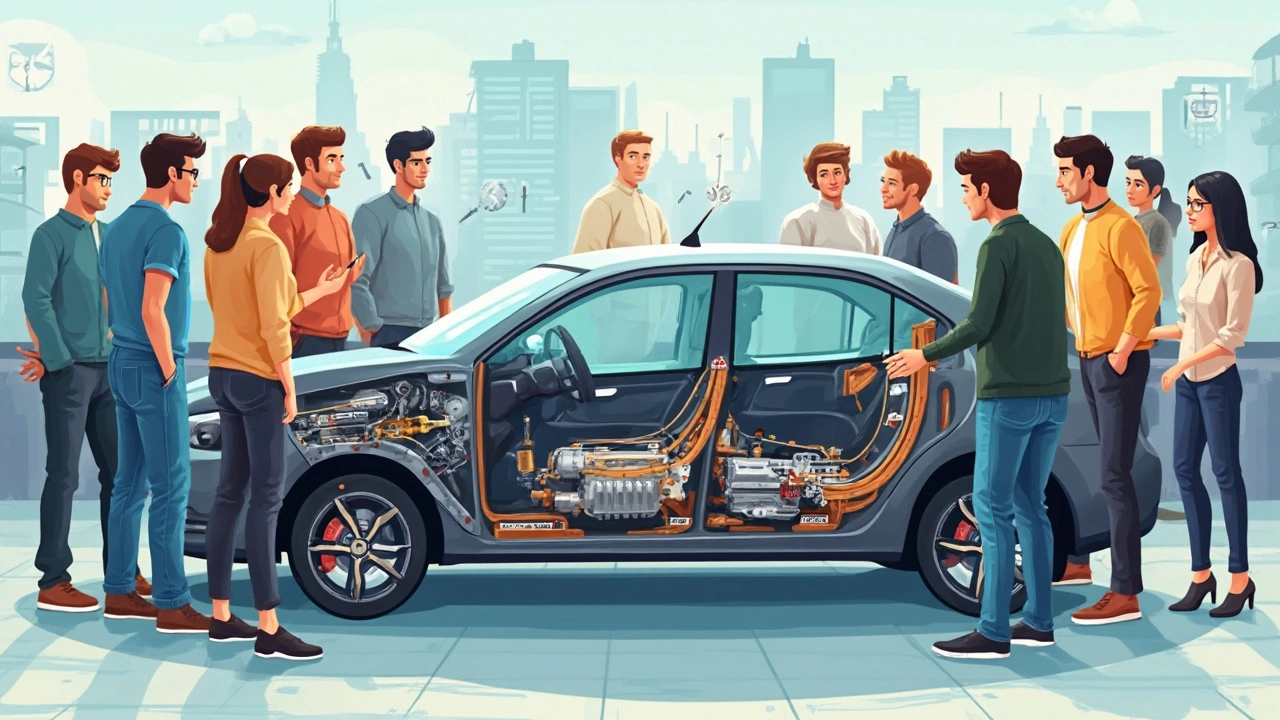
Keeping You Safe: Brakes, Tires, and Lights
If you had to bet on one set of parts to keep you safe, the brakes get the crown. Most cars today use disc brakes at all four corners, with pads that clamp tight onto a spinning disc (the rotor) when you hit the pedal. Some older cars still use drum brakes at the back. Brake pads are meant to wear out—it’s normal to need new ones every so often. If yours start squealing or you feel vibrations through the pedal, don’t wait. That’s your signal to swap pads out before things get dangerous—or expensive.
Modern brakes also come with anti-lock braking systems (ABS). These are a game changer when you need to stop in a hurry. ABS basically pumps the brakes automatically for you in slippery conditions, so your wheels don’t just lock up and send you into a skid. If an ABS light pops up on your dash, you should get it checked, but your regular brakes will still work. Just know you don’t have the skid protection until it’s fixed.
Now, tires are the only part of your car that actually touches the road. All those fancy engine and brake parts mean nothing if your tires can’t grip the street. Ever wonder about those strange numbers on your tire’s sidewall—like 225/50R17? That’s telling you exactly how wide and tall your tire is, plus its diameter. Not all tires are created equal. All-season types are good for, well, most seasons, but swap them out if you live where snow is common. Old or bald tires can turn even a short drive into a gamble. Use the penny trick—stick a penny into your tread, Lincoln’s head first. If you see the top of his head, your tread is too thin.
Lights play a surprisingly big role in safety, too. Headlights, taillights, turn signals, and brake lights aren’t just for looks. Headlights may get cloudy (from sun and air exposure), which actually happens to most plastics—not just car parts. Cloudy headlights cut down on how much road you can see at night, so kits to clean them are cheap and easy to use. If a bulb goes out, you can usually swap it for a few bucks and in less than ten minutes—most owners’ manuals have step-by-step pictures.
Never ignore a dashboard warning light, especially if it flashes red. That’s the car’s way of yelling for help. Grab a cheap code reader online (they’re under $30 now!) or stop by an auto parts store where many will scan it for free—no need to blindly trust a huge repair bill.
Making It Comfortable: Air Conditioning, Electronics, and Interior Gadgets
Baked seats in summer, frozen fingers in winter—none of that is fun. Modern cars use an air conditioning (AC) compressor, which chills things down by moving refrigerant through a maze of tubes. If your AC starts blowing warm air, you might be low on refrigerant or the compressor itself could be struggling. Fixing an AC system can get pricey, but sometimes it’s just a leaky seal or a clogged filter—the cabin filter is often hidden behind the glovebox and costs a few bucks to swap out.
Electronics are everywhere now. From power windows to fancy infotainment screens, your car is as much computer as machine. Ever had a window refuse to roll up, or a touch screen freeze? It’s usually a wiring issue or a bad fuse. Check your owner’s manual; most cars put the fuse box in easy reach, and you can replace a blown fuse for a couple of dollars.
Modern cars are packed with sensors and “smart” systems. Tire pressure monitors can tell you if you’re losing air. Backup cameras and blind spot sensors are almost standard now—they use radar and little cameras to keep you out of trouble. If a warning light comes on for any of these, don’t panic. Sometimes it just needs a sensor cleaned or reset. But if cameras or sensors keep glitching, best to get them checked, especially before a long trip or test drive.
Heated seats, keyless entry, voice controls—these aren’t must-haves but they do make daily life comfier. If you’re buying a used car, check all these features before signing. A key fob with a dead battery is an easy fix. Weird electrical failures could mean something deeper, like an issue with the main control module.
One pro tip: Don’t eat or drink messy things in your car if you want your buttons and electronics to last. French fry oil or soda can kill a power seat switch faster than you’d think. And for older cars, carrying a tiny bottle of touch-up paint in the glovebox can keep interior scratches from spreading or rusting.
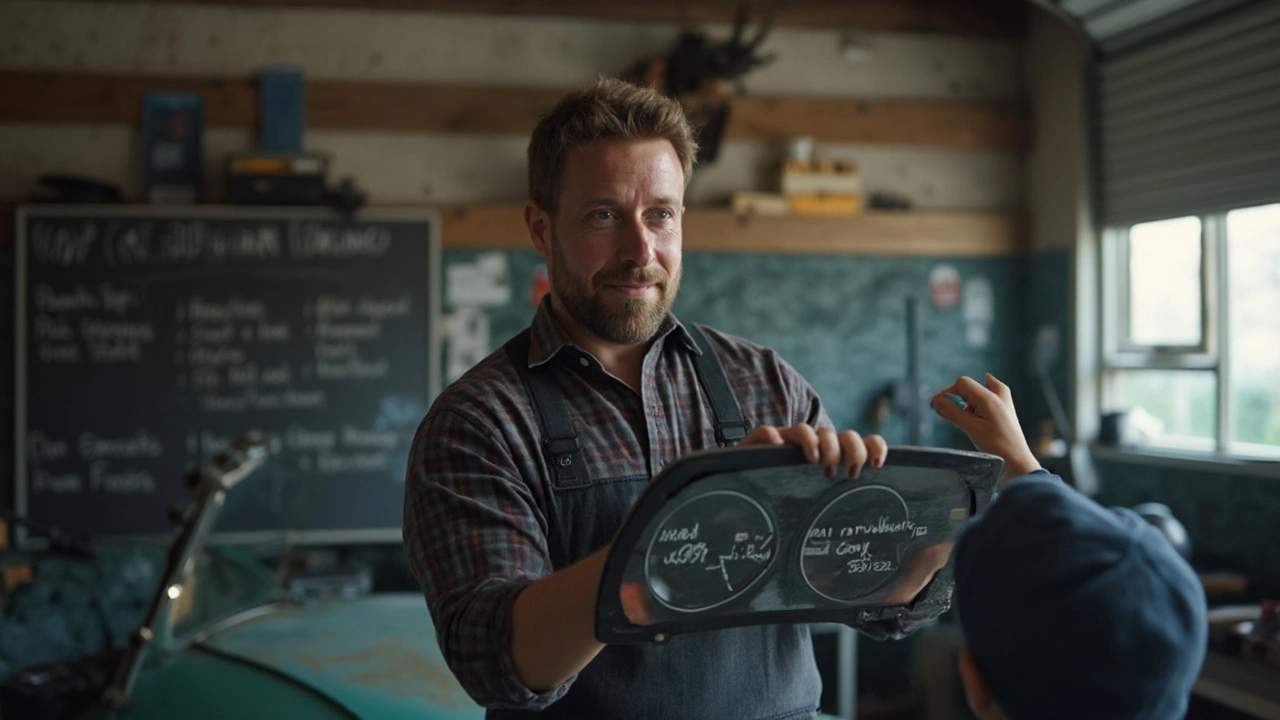
Everyday Basics: Fluids, Filters, and DIY Upkeep
Cars run on more than just gas. Oil, coolant, transmission fluid, power steering fluid, and brake fluid all play a part. Each has its own job—oil for engine, coolant for temperature control, brake fluid so your pedal feels firm. Every car needs these topped off and changed at regular intervals. Ignore them, and things go sideways fast. Oil changes should happen every 5,000 to 7,000 miles for most modern cars. Transmission fluid isn’t as frequent but neglect it and you might get stuck with a huge repair bill—especially if you haul heavy loads or tow trailers.
Filters deserve more credit than they get. Oil filters keep gunk out of your engine. Air filters clean the air before it gets sucked in and mixed with fuel. Cabin filters keep your breathing air fresh. If you drive somewhere dusty, you’ll need to swap filters more often. Changing them is an easy entry-level DIY job, and usually takes less than 20 minutes with a Youtube video for guidance.
Batteries are sneaky—they work fine until one morning your car just won’t start. Average car batteries last three to five years. If you notice your headlights dimming or engine cranking slower, it’s probably time for a new one. Using a multimeter, you can check battery voltage yourself—a healthy battery should show around 12.6 volts with the engine off.
Wiper blades and washer fluid are simple but crucial. You don’t want to find out your wipers are trash the first time a storm hits. Wipers are cheap and swap out in seconds. As for washer fluid, don’t just pour in water if you live where it freezes—special blends keep your windshield clear all year.
The secret to learning about cars isn’t knowing everything—nobody does. It’s about picking up the basics, paying attention to warnings, and being curious under the hood every now and then. Never be afraid to ask a question or look up a how-to video. Every confident car owner started out knowing zilch, so you’re definitely not behind. Remember, understanding your car’s essential parts isn’t about being an expert; it’s about avoiding surprises, saving money, and staying on the road longer. And next time someone throws around the term car parts, you’ll actually know what they’re talking about—and maybe school them a bit, too.
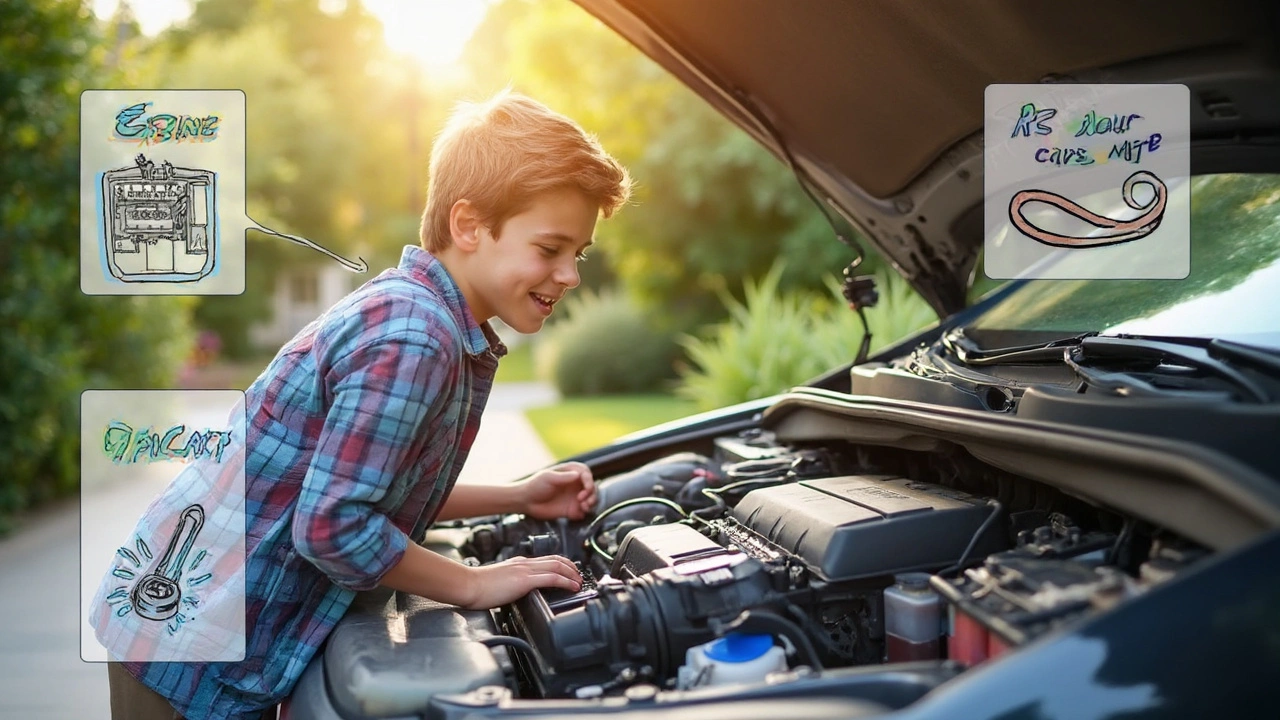



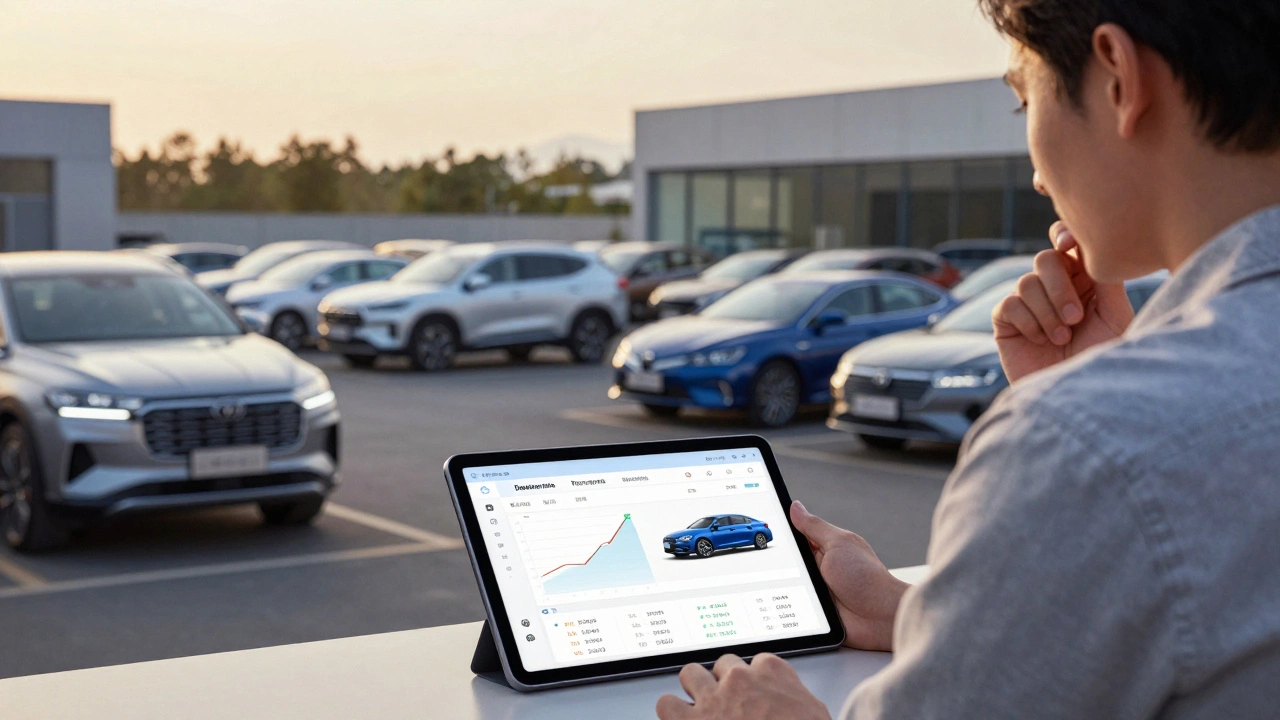
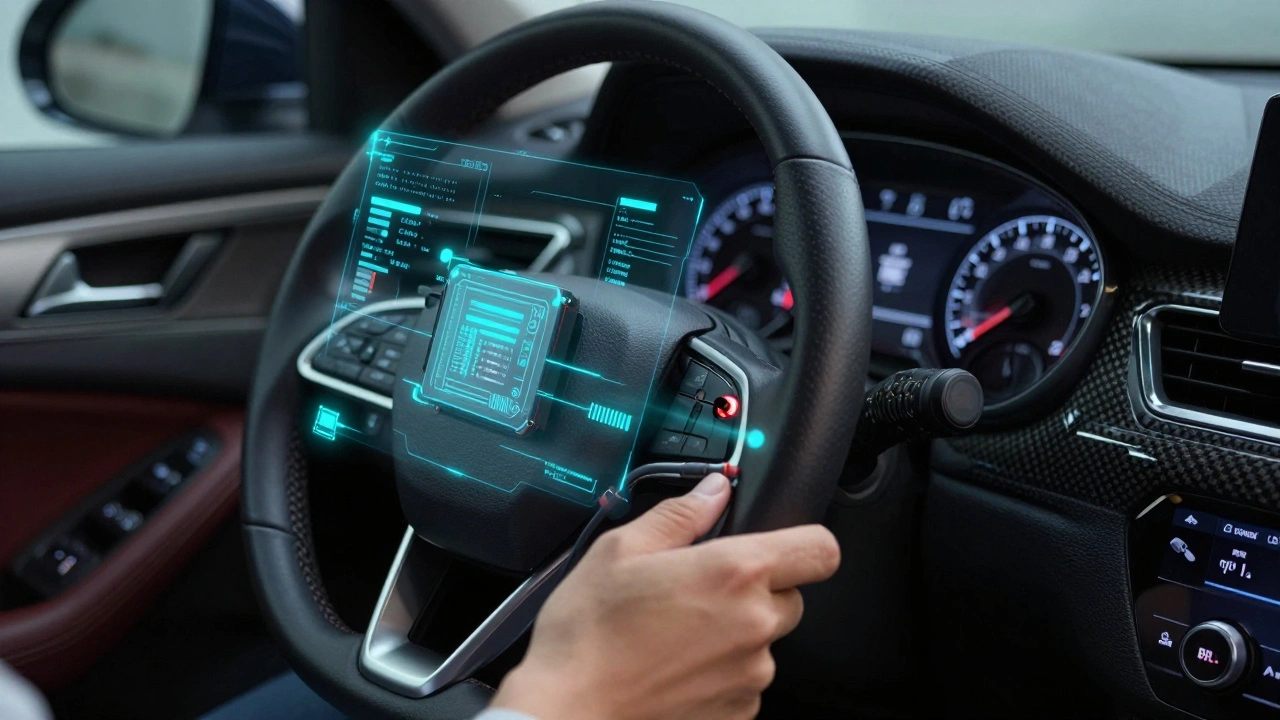
Donald Sullivan
July 17, 2025 AT 23:11Alright, I gotta say, this guide looks like a solid start for newbies who are tired of pretending to understand what the mechanic’s saying. Everyone’s gotta know what makes their car tick, or at the very least, not get ripped off at the garage. I appreciate how the author is keeping things simple and jargon-free—like, no one needs to know what a camshaft is off the bat, but knowing it’s important is a start.
One thing I’d add is a quick note on safety gear when checking car parts, because some folks dive in headfirst without gloves or glasses. Plus, it helps if you can recognize a legit problem versus minor quirks. Any tips on spotting that would be gold.
Does anyone here have a go-to tip they’d add for first-timers? Maybe something that sounds obvious but really isn't?
Tina van Schelt
July 20, 2025 AT 11:26This guide is like a fresh breeze for anyone who’s felt tangled in the spaghetti mess of car parts and mechanic lingo. I mean, who hasn’t sat there with glazed eyes trying to decipher what on earth a serpentine belt does? Love that this breaks it down with smart tips and fun facts—it feels like a chat with a knowledgeable friend rather than a boring textbook.
For those just starting, I’d sprinkle in some crazy cool trivia about parts—like how the catalytic converter cleans nasty gases, basically making the car a tiny magic potion brewer! Maybe more visuals or analogies would jazz it up too because visuals = instant 'aha!'
Ronak Khandelwal
July 22, 2025 AT 19:00Oh, this is absolutely energizing! Learning about our cars is like unraveling a small universe sitting right under the hood. It's more than just nuts and bolts; it’s about empowering ourselves to make informed choices. 🚗✨
Knowing the parts not only keeps you safer but also connects you deeper to the journey of owning a car. Plus, it’s a rad way to connect with mechanics and fellow car lovers without feeling lost in the void. I’d encourage everyone to dive in, ask questions, and maybe even share what you discover with your crew.
Jeff Napier
July 25, 2025 AT 02:33Honestly, I doubt any 'guide' can spill all the secrets they got from the car overlords controlling us with their parts and service fees. This feels like another layer of the system trying to convince us we’re in control when we’re just being fed just enough info to keep ourselves busy and compliant. Just saying, we’re all pawns staring under the hood instead of questioning why SUVs need 17 different parts just to start.
Still, the point about not getting lost at the mechanic? Sure, that’s useful. But beware—knowing the parts might just make you vulnerable to targeted upsells. Anyone else feel like mechanics use your 'new knowledge' to lure you deeper down the rabbit hole?
Sibusiso Ernest Masilela
July 27, 2025 AT 10:06Let’s be real here. Most beginners won’t retain half of this information because it’s spoon-fed in the most basic way possible. I appreciate the intent, but if you want true mastery, this guide barely scratches the grease beneath the surface. Call me elitist, but understanding a car requires more nuance than 'no confusing words' can offer.
Still, this is a start for the masses, and for those who want to level up beyond the basics, there should be a caveat: don’t stop here. Learn the real nitty-gritty or be forever lost in trivialities.
Daniel Kennedy
July 29, 2025 AT 17:40I really like how this guide serves as a gentle intro without overwhelming anyone. Sometimes when you’re new, being hyper-technical just shuts you down. This hits the sweet spot where people can get curious and stay confident. For anyone nervous about opening the hood, these basics are like your best friend on standby.
Also, it’s smart how it encourages spotting issues early. Catching a problem before it snowballs can save serious money and headaches. If I might add, learning how to do a visual check for leaks or worn belts can be an empowering next step after basics.
Taylor Hayes
August 1, 2025 AT 01:13This is a really wholesome read for newbies trying to find their footing. The way the author breaks things down feels supportive and patient, which is exactly what a beginner needs. Sometimes tech-heavy guides just throw jargon at you and leave you more confused, but this is different—it builds curiosity instead of walls.
I would love to hear from the community what first tricky part they learned to identify or fix themselves? Little victories in understanding can really boost confidence.
Sanjay Mittal
August 3, 2025 AT 08:46From a technical point of view, this guide offers a good starting block, especially for those not familiar with car mechanics. Cars are complex but knowing components like battery, brake system, and engine basics really helps reduce anxiety when faced with a problem.
To build on this, I would recommend adding common troubleshooting steps for each main part—like what to check if the car doesn’t start or if you hear unusual noises. Equipping beginners with practical diagnostic skills makes this guide that much more valuable.
Adithya M
August 7, 2025 AT 23:53I gotta say, the grammar and clarity here really make the guide more digestible. No one wants to wrestle with bad phrasing when they’re already lost. This level of polish invites a wider audience to grasp car parts without feeling dumbed down. Props for that.
One suggestion: consider adding a glossary section for terms that might crop up in discussions, even if briefly mentioned in easy language. That way, readers can dip in anytime for a quick refresher.
Jessica McGirt
August 10, 2025 AT 07:26Reading this actually got me thinking about my last trip to the mechanic and how clueless I felt. Thanks for bringing this resource out—it feels like those first steps in building self-reliance with car knowledge. The inclusion of little-known facts caught my eye; those are fun and make the learning stick better.
For a follow-up, maybe consider a section on how environmental factors affect car parts over time? That could be invaluable for people living in extreme weather regions.